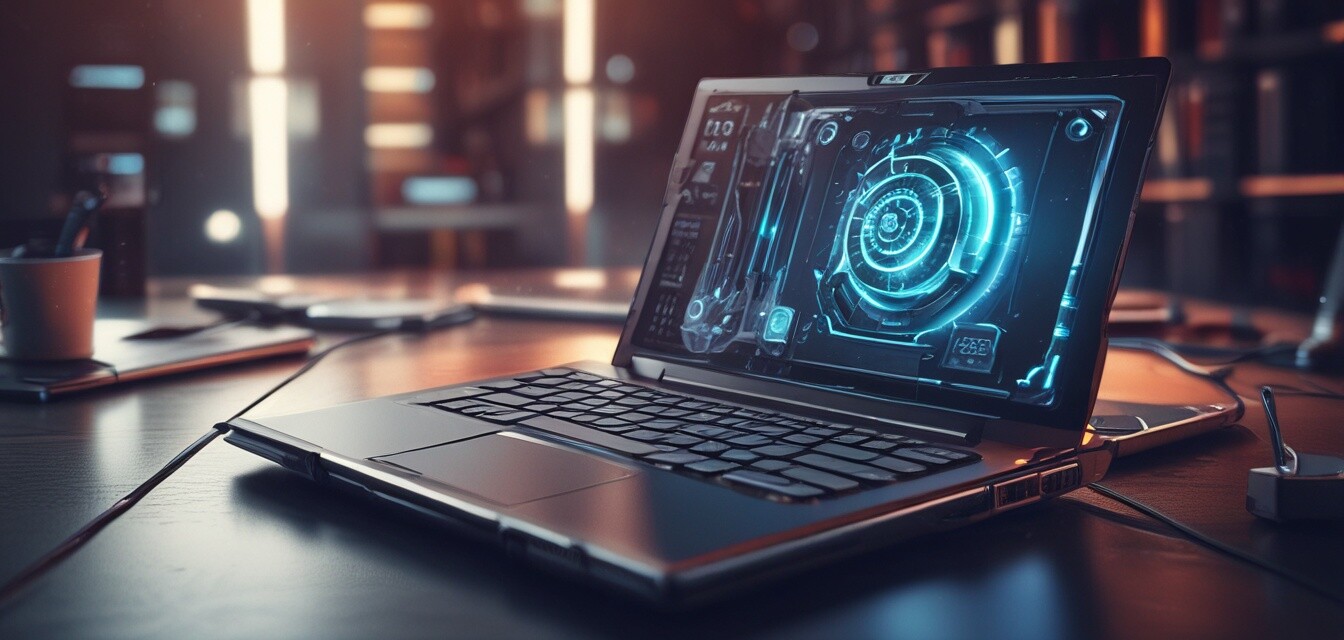
The Future of Laptop Cooling Solutions
Key Takeaways
- Heat management is essential for high-performance laptops.
- Advanced cooling technologies are evolving to address thermal challenges.
- Innovative designs improve both performance and user experience.
- Future solutions may include hybrid approaches combining active and passive cooling.
As laptops continue to evolve in terms of performance and design, the question of efficient heat management becomes more critical. High-performance laptops, designed for gaming, content creation, and intensive applications, often suffer from overheating issues. This necessitates innovative cooling solutions that can enhance performance without sacrificing portability. In this article, we will explore the latest developments in laptop cooling technologies and what the future holds for managing heat in high-performance laptops.
Understanding the Importance of Laptop Cooling
The innovative designs of modern laptops often come with powerful processors and graphics cards. However, this increase in power leads to more heat generation, which can cause thermal throttling, where devices reduce performance to prevent overheating. Effective cooling solutions ensure optimal performance and durability of the devices. Here are some of the main reasons why cooling solutions are essential:
- Maintains optimal performance and prevents thermal throttling.
- Enhances the lifespan of components by reducing heat damage.
- Improves user comfort with reduced noise and heat output.
Current Cooling Technologies
Today’s laptops utilize various cooling technologies to handle heat effectively. Understanding these can shed light on the evolution of future solutions. Here are some of the most common methods:
| Cooling Technology | Description | Pros | Cons |
|---|---|---|---|
| Air Cooling | Utilizes fans to circulate air and dissipate heat. | Cost-effective, easy to implement | Noisy, limited by ambient temperatures |
| Liquid Cooling | Uses liquids to absorb heat from components and transfer it to a radiator. | Highly efficient at thermal management | More expensive, potential for leaks |
| Phase Change Cooling | Refrigeration-like system that cools components by transitioning substances between states. | Very effective cooling capability | Complex, expensive, and space-consuming |
| Heat Pipes | Passive cooling solution using thermal conduction to transfer heat. | No moving parts, silent operation | Dependent on physical orientation |
Emerging Cooling Technologies
As technology advances, new cooling solutions are being explored. These innovations aim to address the shortcomings of current methods while providing better performance. Here are a few technologies currently being developed:
- Graphene Cooling: Known for its high thermal conductivity, graphene can be utilized to create lighter cooling components that are more efficient.
- Electrohydrodynamic Cooling: This method uses electric fields to manipulate fluid flow to enhance heat removal.
- Microfluidic Cooling: Incorporates tiny channels for liquid cooling within the device itself, allowing for more efficient heat dispersion.
Future Trends in Laptop Cooling
Looking ahead, we can identify several key trends that will shape the future of laptop cooling solutions:
- Hybrid Cooling Systems: Future laptops may utilize a combination of active and passive cooling methods to maximize efficiency.
- Eco-friendly Solutions: Emphasis on sustainable materials and technologies will become increasingly important in cooling designs.
- Smart Thermal Management: Integration of AI-driven systems to adjust cooling dynamically based on workload demands will gain traction.
Conclusion
As laptops become more powerful, effective heat management will play a pivotal role in performance and user satisfaction. The evolution of cooling solutions presents exciting opportunities for users and manufacturers alike. Staying informed about these advancements could lead to making more educated purchase decisions, especially in the high-performance sector. For more insights into the latest developments in the world of PCs and laptops, explore our Blog on News and Trends and other categories such as Buying Guides.
Pros
- Improved performance and reliability of laptops.
- Increased lifespan of components with better thermal management.
- Enhanced user experience through quieter and cooler operations.
Cons
- New cooling technologies can be expensive to implement.
- Complex systems may be harder for users to maintain or replace.